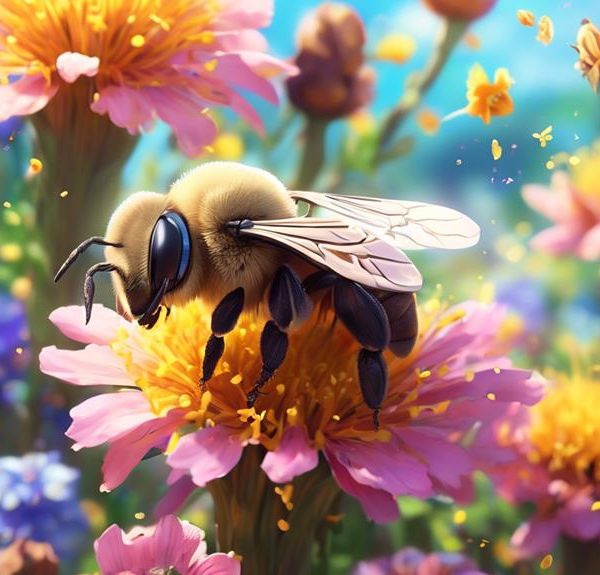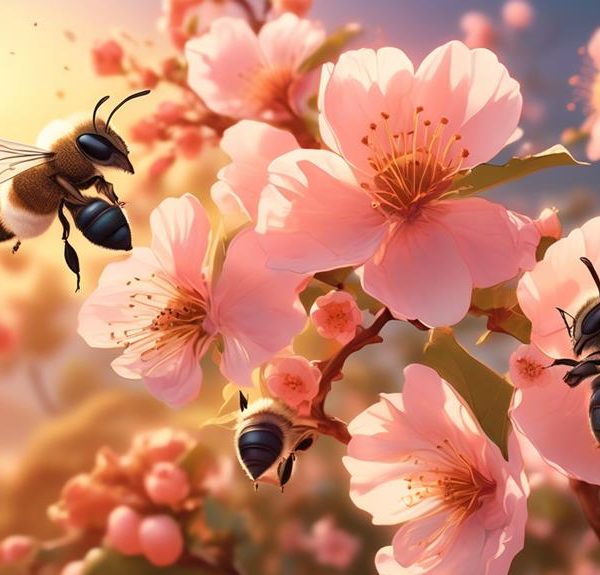Stumble upon the captivating differences between mason bees and honey bees; explore a world buzzing with more complexity than you ever imagined.
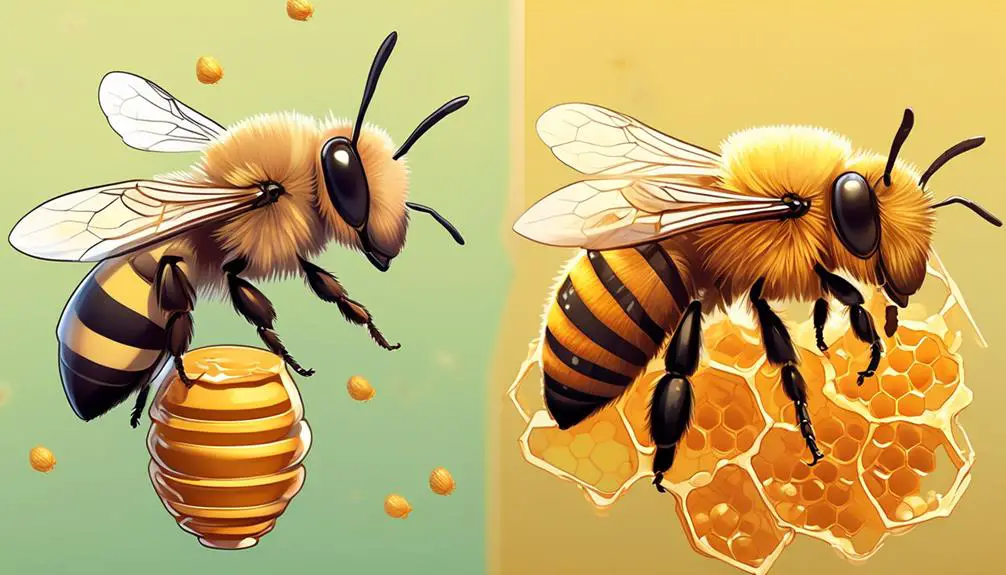
Are Mason Bees Honey Bees
While you might be tempted to lump all bees into the same category, it's important to understand that not all bees are honey bees. Sure, they're all buzzing, flying insects that play a crucial role in our ecosystem, but that's where the similarities end for many species.
You've probably heard of mason bees, which may have led you to wonder if they're just another type of honey bee. As we navigate through the fascinating world of these industrious insects, we'll highlight the unique characteristics of both mason bees and honey bees, and by the end, you'll be well-equipped to differentiate one from the other.
So, are mason bees indeed honey bees? Stick around, and you'll discover a world more complex and intriguing than you might have imagined.
Key Takeaways
- Bees, including mason bees and honey bees, are crucial pollinators for plant growth.
- Honey bees have a complex social structure and are known for their honey-making abilities.
- Mason bees are solitary insects, smaller in size, and more efficient pollinators.
- Honey bees can be managed more easily due to their hive mentality, while mason bees are more resilient to harsh weather conditions.
Understanding Bee Fundamentals
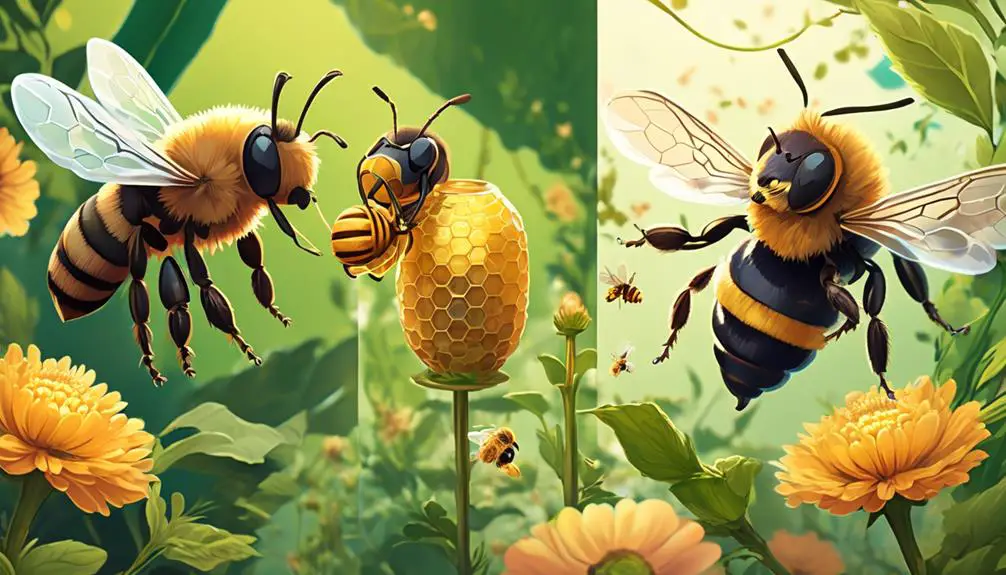
Before diving into the differences between mason bees and honey bees, it's crucial to get a handle on some bee fundamentals. You see, bees aren't just buzzing insects that make honey; they're important pollinators, contributing to the growth of plants, fruits, and vegetables.
Now, there are over 20,000 species of bees worldwide, but let's focus on two: mason and honey bees. These species belong to the Apidae family, yet their behaviors, life cycles, and roles in pollination significantly differ.
Mason bees, scientifically known as Osmia, are solitary bees. Each female is fertile and makes her own nest, usually in hollow reeds or holes in wood. They're named 'mason' because they use mud or other masonry products to construct their nests.
On the other hand, honey bees, or Apis, are social insects, living in large colonies with a queen, workers, and drones. They're renowned for their honey-making abilities, but they also play a crucial role in pollination.
Characteristics of Honey Bees
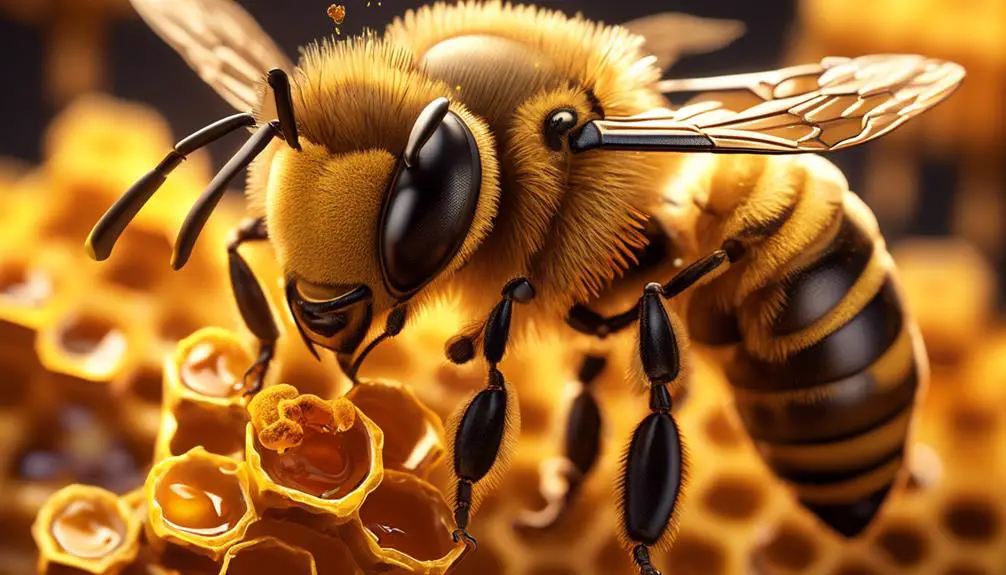
When it comes to honey bees, you'll find that these industrious insects are remarkable for their complex social structure, their honey-producing capabilities, and their indispensable role in pollination. They belong to the genus Apis, known for species that live collectively in large, well-organized colonies.
Each honey bee colony is a meticulously coordinated society, composed of thousands of worker bees, a few hundred drones, and a single queen. The queen's primary role is reproduction, while the worker bees, which are sterile females, perform various tasks including foraging for nectar and pollen, building and repairing the honeycomb, and feeding the larvae. Drones, the male bees, exist solely to mate with the queen.
Honey bees are also renowned for their role in the production of honey. They convert the nectar collected from flowers into honey, which serves as a food source for the colony. Their unique ability to produce and store honey makes them of great economic value to humans.
Moreover, honey bees are pivotal in pollination, transferring pollen from the male parts of a flower to the female parts, thus facilitating the production of fruits and seeds. This vital role underpins their ecological significance, as they contribute to biodiversity and food production.
Identifying Mason Bees
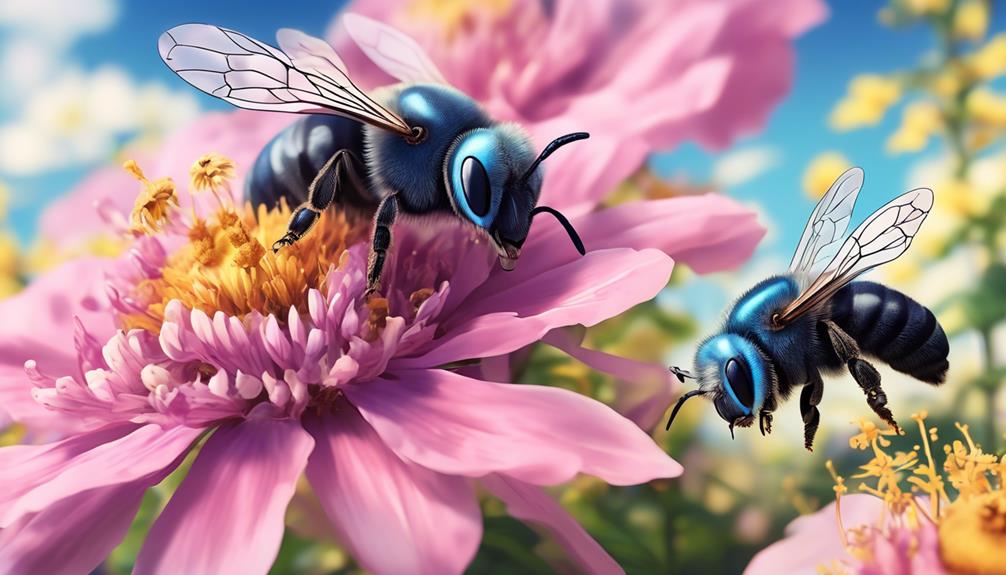
Shifting our focus to Mason bees, you'll find these solitary insects, belonging to the genus Osmia, offer unique characteristics that set them apart from their honey bee counterparts. Unlike honey bees, they don't produce honey or beeswax, nor do they live in hives. Instead, they're solitary bees dwelling in pre-existing cavities, often filling them with mud – hence their name.
To identify a Mason bee, you'll look for specific physical traits. They're typically smaller than honey bees, between 1/4 to 1/2 inch in length, and exhibit a metallic blue or green hue. They've round, robust bodies and possess two pairs of wings, with the hind pair shorter than the fore pair. You'll also notice that their antennae are short and bent.
When observing their behavior, you'll find they're less aggressive and more efficient pollinators. They fly in cooler and wet weather, and instead of collecting nectar, they gather pollen on their abdomen. You'll see them darting from flower to flower, distributing pollen more effectively, contributing significantly to the pollination of plants and crops.
Key Differences and Similarities
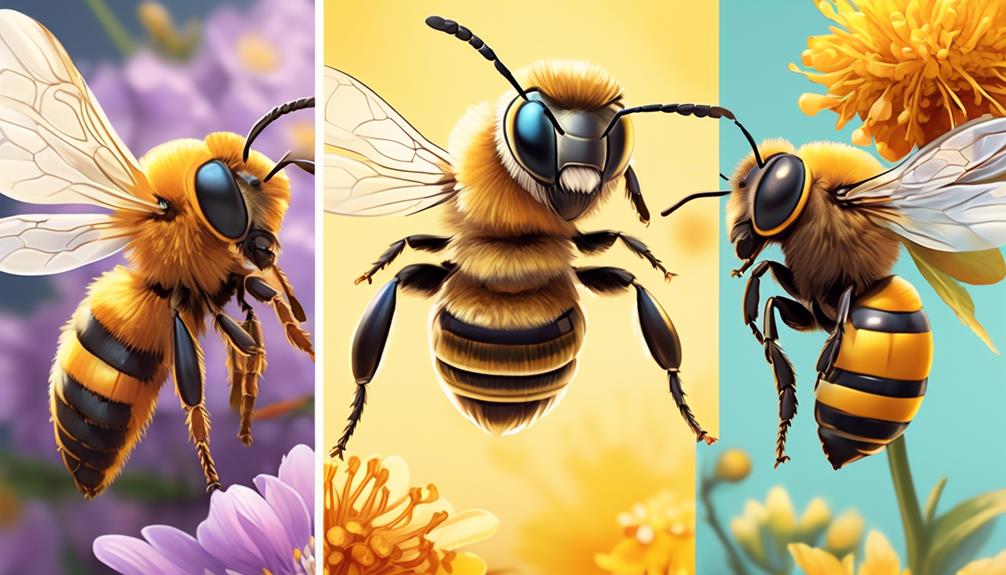
Diving into the heart of the matter, let's explore the key differences and similarities that distinguish Mason bees from Honey bees, setting them apart yet binding them together in the intricate world of pollinators.
To start, Mason bees are solitary creatures. They don't live in hives like Honey bees, instead preferring to make their nests in tubular cavities. On the other hand, Honey bees are social insects, living in large colonies led by a queen. This difference in behavior impacts the way they pollinate.
Mason bees are more efficient pollinators, visiting up to 2,000 flowers in a day, compared to Honey bees' 50-1000 visits.
Despite these differences, both species share a common goal: pollination. They both collect pollen and nectar from flowers, which they use to feed their larvae. In this process, they play a crucial role in our ecosystem by helping plants to reproduce.
Another similarity is their reaction to threats. While Honey bees can sting repeatedly, Mason bees can only sting once, but they both use this as a last resort.
Mason Bees Vs Honey Bees: the Verdict
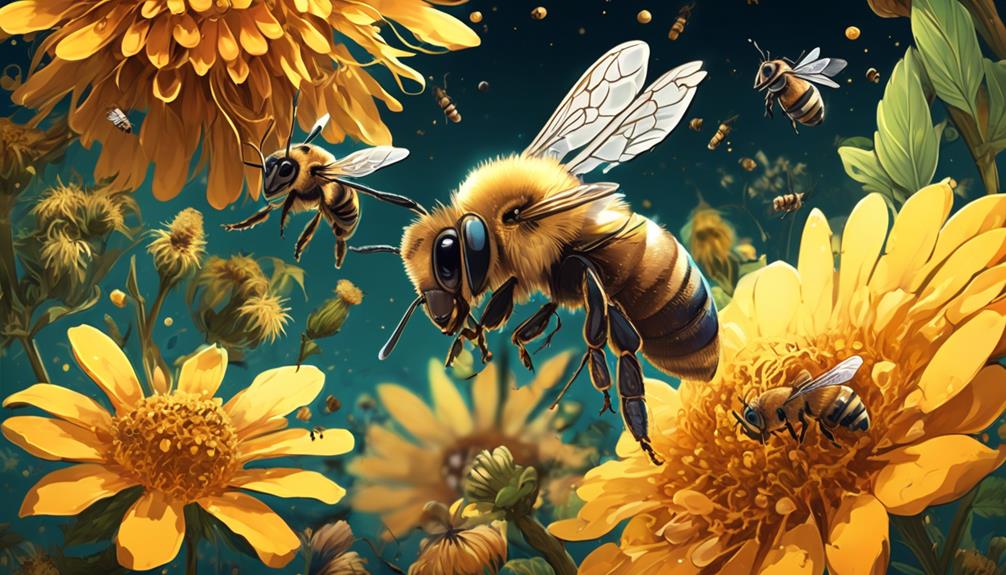
Now that we've explored the key differences and similarities between Mason and Honey bees, let's weigh up the pros and cons to determine which species holds the edge in the world of pollinators.
Mason bees, with their solitary nature and higher pollination efficiency, stand out. You'll find that these bees cover more flowers in less time, which boosts crop yield. Moreover, they're less aggressive and more resilient to harsh weather conditions, which makes them a reliable choice for pollination.
On the other hand, Honey bees, known for their honey production, have a social structure that allows them to pollinate en masse. They're adaptable and can be managed more easily due to their hive mentality. However, their susceptibility to diseases, pest infestations, and reliance on warmer weather are significant drawbacks.
Frequently Asked Questions
What Are the Environmental Impacts of Mason Bees Compared to Honey Bees?
Mason bees don't have the same environmental impact as honey bees. They're solitary, meaning they don't create large hives that can disturb local ecosystems.
Moreover, they're native to many regions, so they don't disrupt local flora like introduced honey bees can.
Additionally, they're efficient pollinators, often more so than honey bees, which makes them essential for local plant life.
Yet, they don't produce honey, so they don't offer that benefit.
How Can One Encourage the Growth of Mason Bee Populations in Their Backyard?
To encourage mason bee populations in your backyard, start by providing a mason bee house. It's a small wooden structure with tiny tubes where they can lay their eggs.
You'll also need plenty of flowering plants for nectar and pollen. Avoid using pesticides, as they can harm the bees.
Lastly, provide a small mud patch, where females can gather mud to seal their eggs in the tubes.
What Are Some Common Predators or Threats to Mason Bees?
You're likely to encounter several predators threatening your mason bees. Birds, spiders, and predatory insects prey on adult bees.
Parasites, such as mites and chalkbrood fungi, can infest larvae. Small mammals might raid their nests for larvae.
Human activity, pesticides, and habitat loss also pose substantial threats.
It's crucial to provide safe nesting options and avoid pesticide use to protect your local mason bee population.
How Does the Honey Production of Mason Bees Compare to Honey Bees?
You're wondering about the honey production of Mason Bees compared to Honey Bees. Interestingly, Mason Bees don't produce honey at all. They're solitary bees and don't live in hives like Honey Bees. Instead, they lay their eggs in small cavities and provide pollen for the larvae to eat.
Honey Bees, on the other hand, produce honey by collecting nectar from flowers and storing it in their hive.
Can Mason Bees Be Domesticated and Kept Like Honey Bees?
No, you can't domesticate mason bees like honey bees. Unlike honey bees, mason bees are solitary creatures and don't live in hives. They nest in pre-existing holes, often in wood.
You can attract and support mason bees by providing suitable nesting sites, but they don't produce honey or beeswax, and they don't have a queen or workers. They're incredibly efficient pollinators, though, making them a great addition to any garden.
Conclusion
In conclusion, mason bees aren't honey bees. They're distinct in their solitary nature, blue-black color, and non-honey producing habits. Yet, they do share commonalities like pollination.
Though less famous, mason bees are vital for our ecosystem. So, it's not a competition, but a celebration of diversity within the bee realm.
Keep this knowledge buzzing in your mind when you encounter these industrious, tiny creatures!

